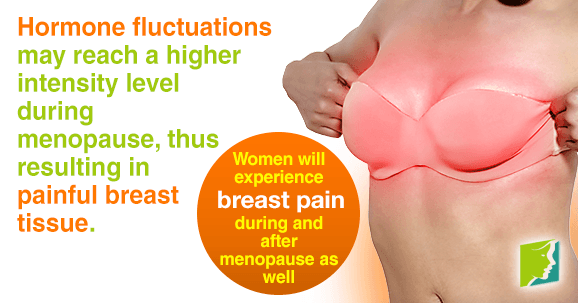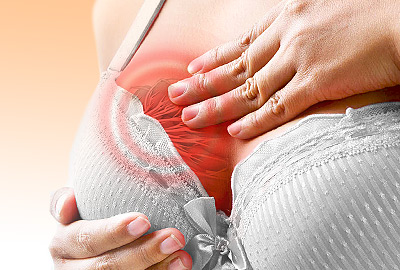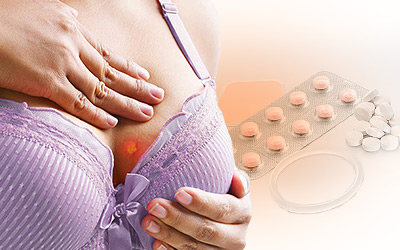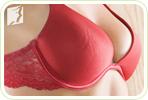Breast pain is an uncomfortable nuisance occurring during PMS, pregnancy, perimenopause, and menopause, most women have no chance of escaping tender breasts at some point in their lives. Breast tissue is directly affected by hormonal imbalances in the body. While most women will experience tenderness cyclically, or during every menstrual cycle, non-cyclical breast pain can occur before, during, and after menopause. Read on to learn about identifying and managing the breast changes your body will go through when you approach menopause.
Identifying the Cause
During and after pregnancy, when the breasts are producing milk, the tenderness level will reach an all-time high. However, many women don't realize that breast pain can extend long after the days of having babies.
Menopause is another time in life where, like pregnancy, hormones are fluctuating all over the place - up, down, and up, and down. The severity of the fluctuations may reach a higher intensity level during menopause, thus resulting in painful breast tissue. A decrease in estrogen levels and an increase in progesterone levels, a natural occurrence during menopause, can cause the breasts to grow. This can be a painful and tender experience. While most women notices the changes before menopause starts, others will experience breast pain during and after as well.
Although many may worry that sudden breast pain could be signs of cancer, rest assured that breast pain is not a common symptom of breast cancer. That being said, routine mammograms for women over 40 years of age are strongly recommended.
Finding a Balance
Rebalancing hormone levels is the key to managing breast pain before or during menopause. Many women explore the natural hormone supplement, phytoestrogen - derived from plants - to help the rebalancing process. Because phytoestrogen is a natural option, it can often be found in food products. Because phytoestrogens work synonymously with estrogen to fill the void in the body, other symptoms of menopause may be relieved as well. The following foods contain phytoestrogens:
Nuts. A great source of phytoestrogens, keep a bag of nuts in your purse at all times. They provide a healthy snack when you need it the most.
Soy. Rich in phytoestrogenic properties, soy products - such as soymilk and tofu - can aid in balancing estrogen levels.
Whole grains. Not only just a healthy alternative in your diet, whole grains contain phytoestrogen.
Beans. Legumes are rich in protein and also a phytoestrogen source.
Breast pain before, during, or after menopause can be managed. Simple lifestyle changes that include gradually cutting caffeine out of your diet, eating healthy, exercising daily, and balancing your hormones can help ease the tenderness immensely. A comfortable and supportive bra might also be a worthwhile investment. Keep reading the links below for more information on treating pain in breasts during menopause.
Sources
- Office on Women's Health. (2010). Menopause. Retrieved January 27, 2015, from http://www.womenshealth.gov/menopause/symptom-relief-treatment/index.html
- Thacker, H. (2009) The Cleveland Clinic Guide to Menopause. New York: Kaplan, Inc., pp. 109




